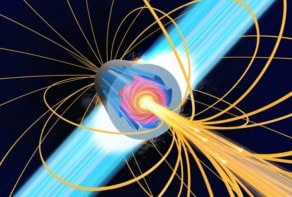(Updated 13 Oct) Activists are warning that an international anti-satellite arms race could develop if the US government continues with a series of orbital space tests.
Last month, the US Army Space and Strategic Defense Command received permission to shoot down an orbiting satellite using its mid-infrared advanced chemical laser, Miracl. In the Pentagon’s view, the test would represent a major step towards developing weapons to destroy reconnaissance satellites and other spacecraft in wartime.
Miracl’s six-foot-wide beam was fired at a miniature sensor technology integration satellite (MSTI-3), launched last year by the US Air Force as part of a project to improve the tracking of missiles from space. During the test, engineers plan to increase Miracl’s power slowly, to determine the brightnesses at which various components of its optics start to malfunction. Miracl is based at the White Sands Missile Range in New Mexico.
“We think [the test] is a rather bad idea, ” says Steven Aftergood, a senior research analyst at the Federation of American Scientists. “It tends to violate the status quo of a moratorium on anti-satellite weapons in a way that would jeopardize the security of orbiting satellites.” In addition, adds Aftergood, the test is unnecessary. “If you needed to curtail the reconnaissance capacity of an unfriendly power, you could do it by disabling its ground receivers, ” he says.
It is not even sure whether shooting down satellites would provide a overwhelming military advantage. This years U.S. Army After Next summer war games held at Carlisle Barracks, Pa, looked at the effect of shooting down satellites in the 21st Century. Their results imply that there would be a rapid replacement of knocked out enemy satellites because of the large numbers of orbiting equivalent commercial craft, suggesting limited disruption to the battlefield using such tactics.
So far, the first two attempts at firing the laser have failed. On October 4 a software breakdown caused the experiment to be scrubbed, and a second attempt on the 6 October was canceled due to poor weather. Time might soon be running out for further experiments. On the 23 October MSTI-3 has to be placed into a new decay orbit to reenter the atmosphere. Presently, Defense Secretary Cohen has not authorized further attempts to be made.


